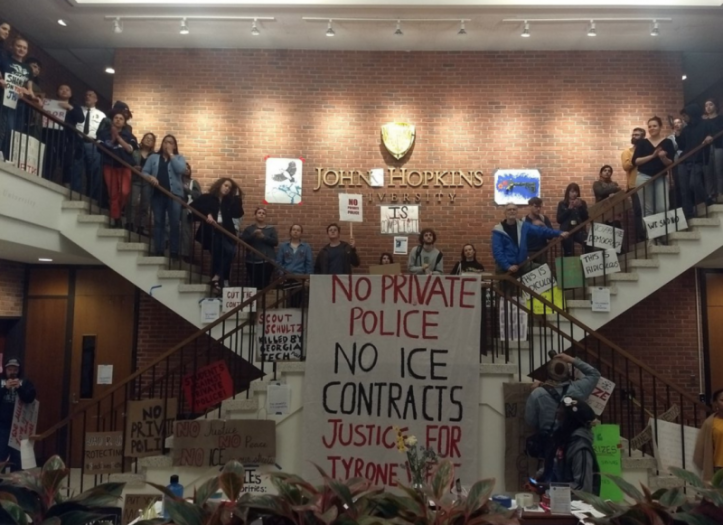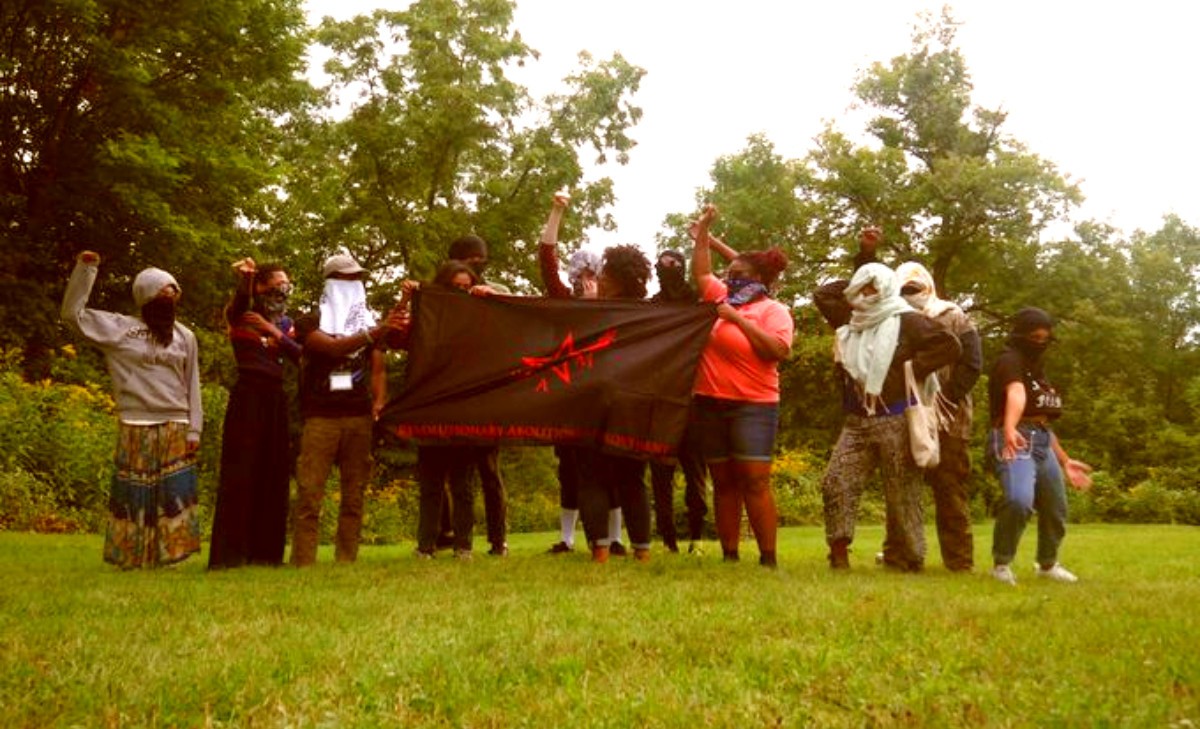from Radical Education Department
By Jason Koslowski
Introduction to the Campus Power Project
This is Part 3 of the Campus Power Project: an ongoing series of interviews, articles, and podcasts. (For Part 1 of the Campus Power Project, click here. For Part 2, click here)
Campus struggles in the US have surged recently: at Johns Hopkins, at Yale, at Evergreen State, at the University of Pennsylvania, and well beyond.
This series aims to help take stock of our campus struggles for radical, bottom-up, antiauthoritarian power on college campuses, so that we can make those struggles more powerful in the coming years. The focus is on concrete organizing lessons we can learn from comrades in revolt.
The media series is only one half of the Campus Power Project. The other half aims to help build up—across Philadelphia and beyond—lines of communication and coordination among radical campus struggles.
If you are working with leftist campus organizations and want to get involved, please reach out to us!
College campuses are systems of capitalist domination: of workers, students and surrounding communities. But campus revolts have been on the rise in recent years. In the US, for instance, as the university system comes to rely more and more on cheap, precarious labor, teacher and graduate student union struggles have been on the rise.
As public funds for colleges are slashed, tuitions increase, and campuses become key sites for fascist recruitment among disillusioned youth, many students are pushing back in occupations, walk-outs, demonstrations and other actions.
In struggles for power on-campus, the sit-in is one of the most often-used tools — although the results are mixed. Sit-ins can be powerful weapons helping shift the balance of university power for the dominated class. But they can also become sinkholes of time and energy leading to reprisals from administrators, burn-out and infighting.
Now that a new school year has begun, what lessons can we learn from recent sit-ins about how and when to use them well? And what other, and more radical, possibilities can sit-ins point us towards? To answer these questions, I look at a few recent sit-ins that happened on very different kinds of campuses. Allowing for differences, we can mine those struggles for organizing lessons.
JOHNS HOPKINS UNIVERSITY, BALTIMORE, MD
The 35-day Hopkins sit-in that began on April 3, 2019 exploded out of a longer struggle against the administration’s push for an armed, private police force on campus. Hopkins justifies that push for the sake of both public safety and keeping up with its “urban university peers” — relying on a method that has already had deadly results across the country. In the process the school strengthens its links to Baltimore’s violently racist police force.
For about a year beforehand, the fight at Hopkins focused on contacting the JHU admins for more information and asking for a reversal of the decision. The sit-in was organized by grad and undergrad groups like Students Against Private Police and Hopkins Coalition Against ICE, with the anti-ICE coalition spearheading campus tour disruptions to affect Hopkins’ bottom line. But organizers drew on a wider base than just students, connecting, for instance, with nurses in the process of unionizing at Johns Hopkins Hospital and coordinating closely with the “the West Wednesdays” weekly demos against police violence, which began to protest the police murder of Tyrone West in Baltimore.
Originally, organizers planned a single-day occupation of the lobby of the administration building that houses the university president’s office. Once the action began, though, the occupiers decided to escalate to an indefinite occupation until administrators met their demands: disband the private police force being prepared for Hopkins; end the medical school’s training of ICE agents; and push for justice for Tyrone West.
For most of its duration the occupation was symbolic. The building functioned much as it had before: admininstrators, staff and students could freely enter and leave. Throughout, a key focus of the struggle was an aggressive media campaign against Hopkins, with organizers winning high visibility for their struggle in national media outlets like the Washington Post and the Chronicle of Higher Education. The administration, however, refused to budge on the demands. And so on May 8, the sit-in escalated. Occupiers locked the doors and shut down all access to non-protesters.
The administration’s response was swift. That night, 100 armed police forcibly evicted the handful of remaning occupiers. Protesters primarily turned to social media to attack the university while continuing support for West Wednesdays.
Despite the highly publicized eviction, the results of the sit-in have been mixed. Admins only agreed to meet after the eviction — at the end of July, when many of the students had left campus. At the meeting they agreed only to a vague campus event about the private police force and ignored calls to end ICE collaboration and disband the private police force. The meeting ended with admins announcing investigations of students and possible retaliation against occupiers.
Yet at the start of the fall term administrators folded to one key demand: the medical school announced it would not renew its contract with ICE. While the struggle is now on a weaker footing after the eviction and with impending reprisals, there is a possibility of escalation by protesters this academic year — especially if solidarity with the nurses’ unionizing efforts develops into a more coordinated and active struggle.

